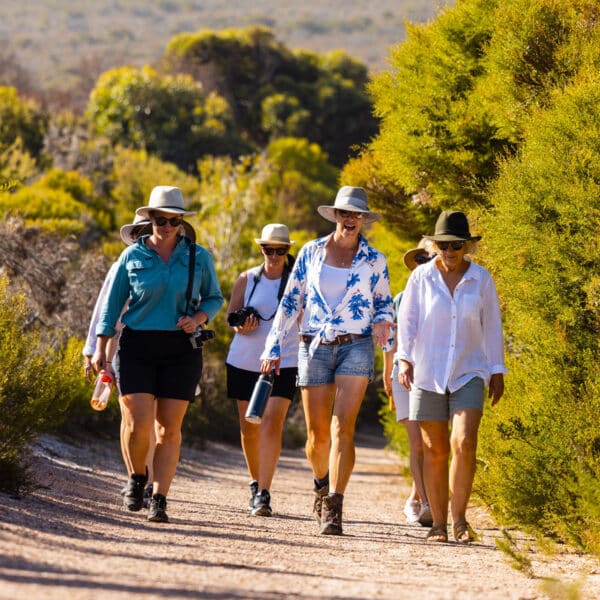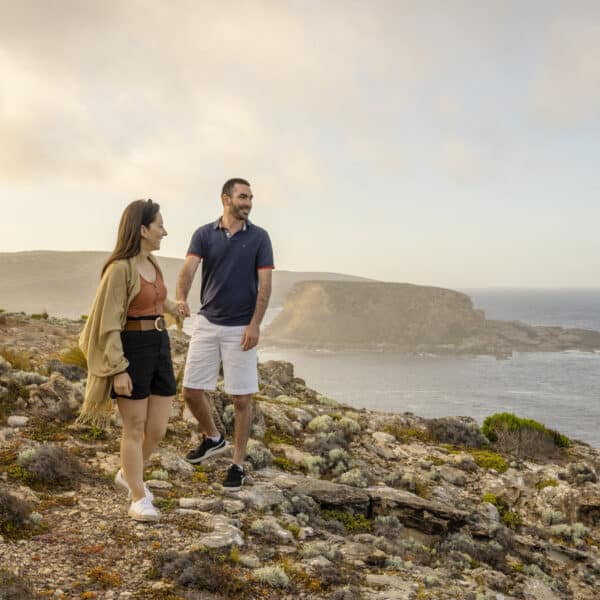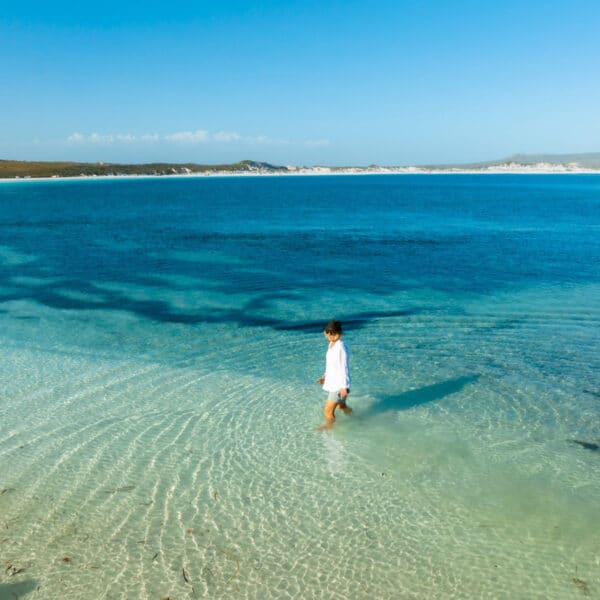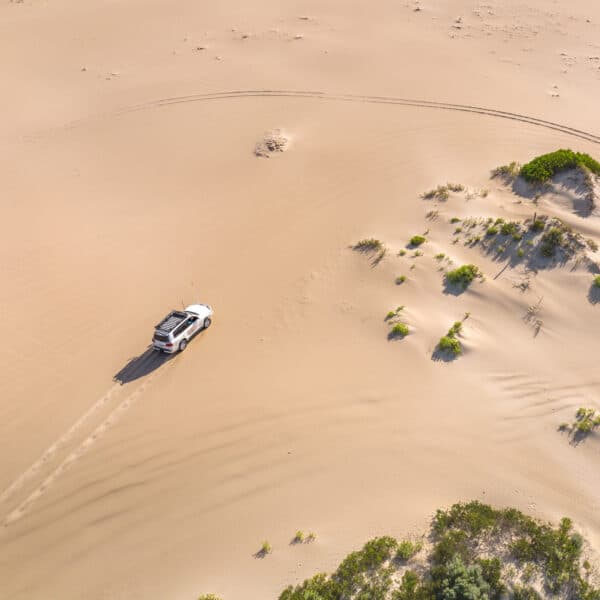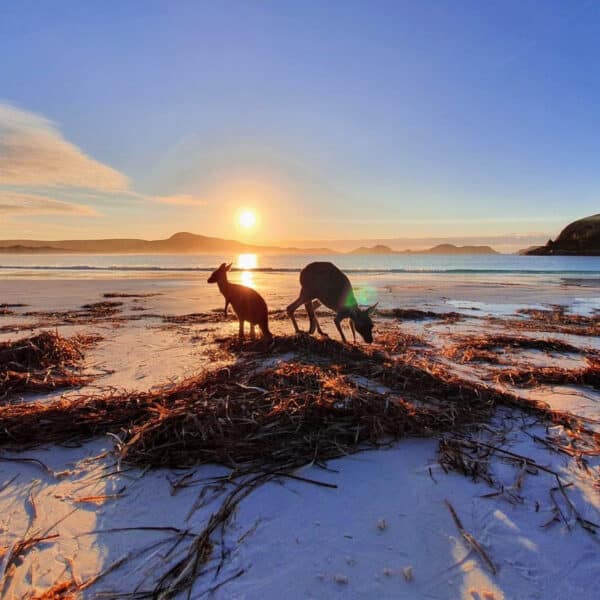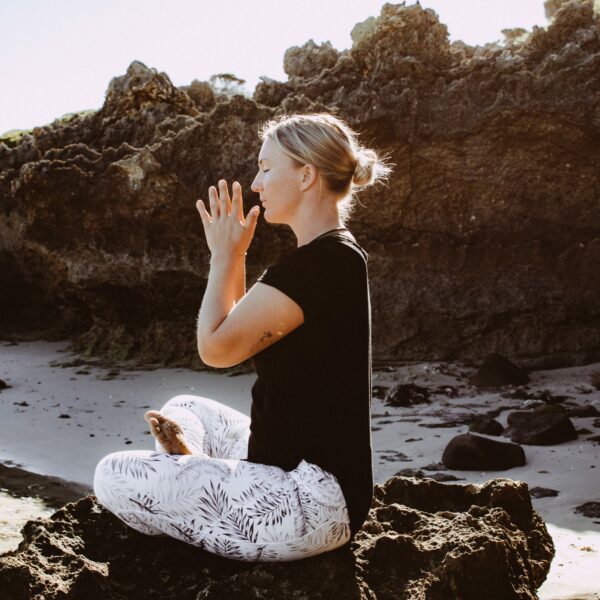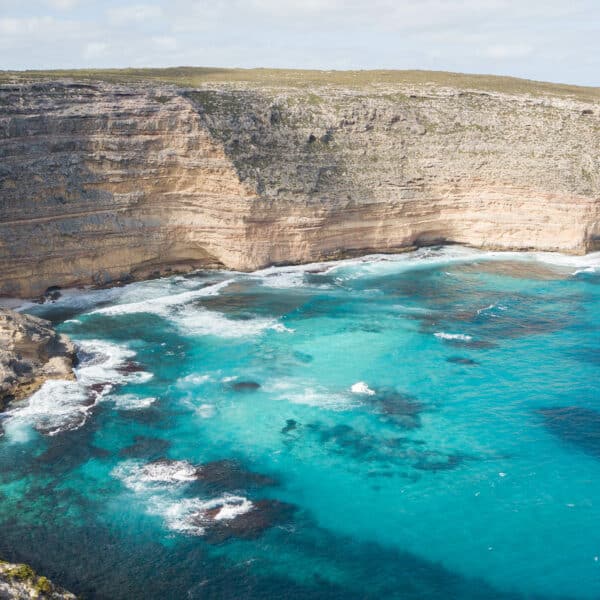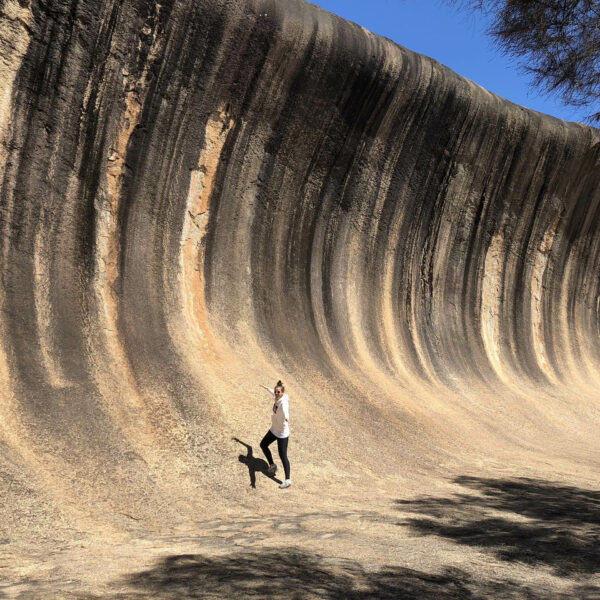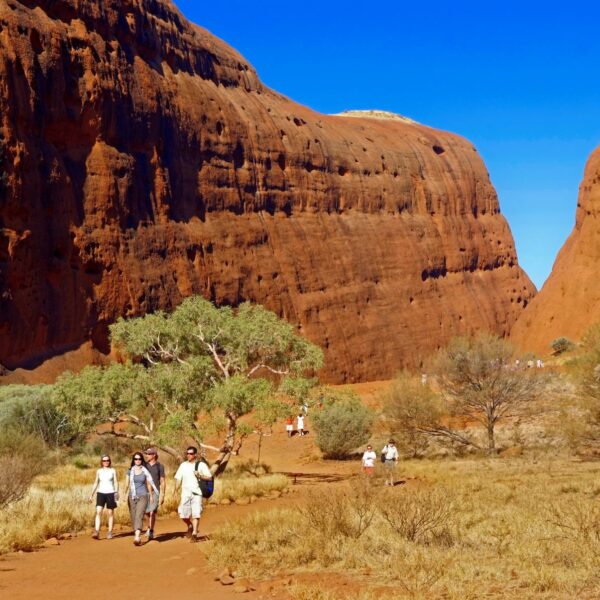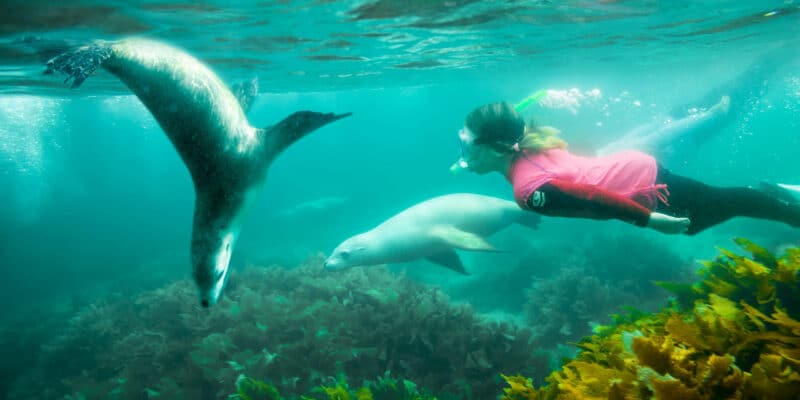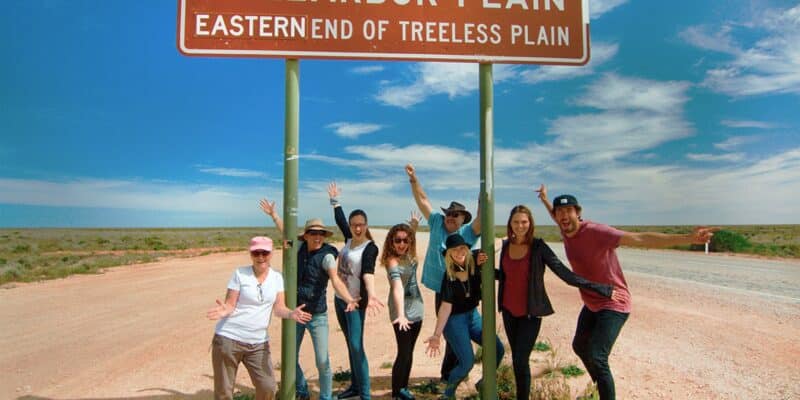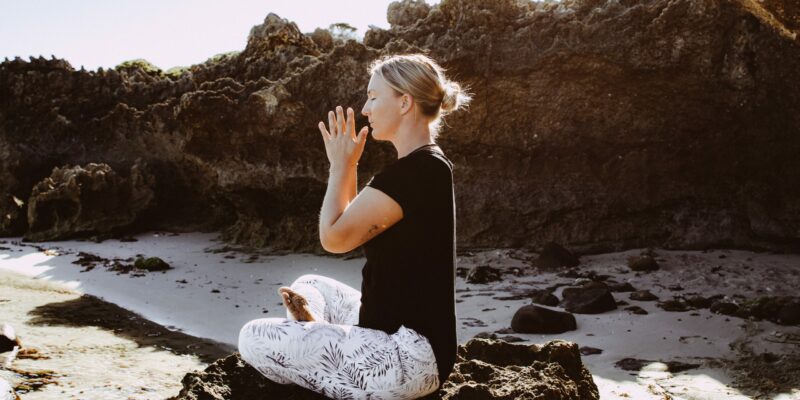Tours
Whale-Watching in South Australia
Whale-watching tours from Adelaide to Head of Bight
Whale-watching in South Australia offers a unique opportunity to view up to 120 southern right whales as they frolic in the waters of the Great Australian Bight Marine Park.
One of Australia’s best whale-watching sites is the Head of Bight. Renowned for its wild, natural beauty, it’s where the ocean meets the Nullarbor Plain in South Australia.
Stand atop the cliffs, where they rise 60 metres high above the sea, on an accessible purpose-built viewing platform. From here, watch the whales with the backdrop of the Bunda Cliffs stretching for over a hundred kilometres beyond.

The whales regularly engage in tail-lobbing, flipper-slapping, head-standing. lopping, diving, spy hopping and slow-motion somersaults. At this special location, you are close enough to hear the sound when they breach and their ginormous bodies hit the water.
We’ll also take you out on a whale-watching cruise where you’ll gain a whole different perspective on the magnificent southern right whales. Whale-watching vessels aren’t allowed to go too close to these graceful giants of the sea. However, whales are naturally curious and will approach us.
Head of Bight is most well known as a place to see southern right whales. But it is likely you will also see humpback whales, dolphins, sea lions, little penguins and other birds and marine life.
On Untamed Escape’s 5-Day Whale Watching Tour departing Adelaide, in addition to these incredible whale-watching experiences, you’ll enjoy the delectable seafood of Australia’s Seafood Frontier, The Eyre Peninsula.
Go on a whale-watching tour from Adelaide
It all begins with a night in Adelaide before catching a short flight from Adelaide to Ceduna. From there, head to Fowlers Bay for your two-hour cruise with EP Cruises. This is the beginning of memorable days with your storyteller guide, who has a lifetime of knowledge to share. Come late afternoon, you’ll be checking in to your villa accommodation with views over the ocean.
After full days of untamed scenery, whale and wildlife sightings, and good old-fashioned local hospitality, you’ll wonder why it took you so long to take this bucket list trip to the “Edge of Australia”.
Whether you jump on with other travellers for a scheduled small group tour or choose a private tour option, this whale-watching tour really is a uniquely wonderful experience.

When is the best time to see whales in the Great Australian Bight?
The best time to go whale watching in Australia is the winter season, from July to September.
The whale watching season begins every year towards the end of May, or the start of June, when the southern right whales arrive at the Head of Bight to give birth, mate and socialise. It continues until September when the calves have grown. Then they are strong enough to join their mothers on the long migration south towards Antarctica to feed for the summer.
Head of Bight Whale Watching Facts:
Whales take up ‘residence’ at the Head of Bight (HoB) for the 5-month winter season.
You are sure to see whales in June, July and August, so this is the best time to visit.
In June 2014, an aerial scan counted 169 southern right whales, two humpback whales, a couple of great white sharks and lots of dolphins.
1000 whales have been recorded in the HoB region, and some have been observed returning since 1991.
Whales are usually seen in mother and calf pairs but occasionally hang out in groups of up to 20.
In June and July, most of the whales you see are adults, but by late August, you can commonly see the mothers swimming along the cliffs with their young calves at their side. At this time, there are often 70 or more whales in the area visible from the platform.
In 2012, 55 calves were born at Head of Bight.

Around one-third of all southern right whales now seen in Australian coastal waters were born in the Great Australian Bight.
By the time the whales leave in September, the calves have grown and have become strong enough to join their mothers on the long migration south.
You may even be lucky enough to observe these 70-tonne mammals mating (look for groups rolling around on the surface).
Southern right whales have been completely protected since 1937 because they were almost hunted to extinction. But these beautiful creatures are still listed as “vulnerable”. The Head of Bight is recognised as a calving ground and nursery of international significance for the species.
The experience of a lifetime
Our 5-Day Whale Watching Tours depart Adelaide, or there is a 3-Day option from Ceduna if you are happy to arrange your own flights. Some of the untamed moments include:
- Witness up to 120 migrating Southern Right Whales at Head of Bight
- Cruise along the coast at the Great Australian Bight Marine Park
- Immersive Smoky Bay oyster tour and tasting
- Feast on the region’s famed seafood and produce
- Roam pristine beaches and pockets of wilderness
- Traverse the iconic Nullarbor Plain
- Scenic whale-spotting flight over Head of Bight (OE)
- Unearth the real Eyre Peninsula with your expert local guide
Meet the Makers – Chinta Air

There are some fabulous small businesses on the Eyre Peninsula, many of which we proudly partner with. These partnerships allow us to offer travellers the most comprehensive bundle of experiences in the region.
Meet the proud and passionate locals who will pilot your scenic whale watching flight over the Great Australian Bight and beyond. We took five with one half of Chinta Air, Felicity Brown, who is also the only female Chief Pilot in South Australia.
Your scenic flights take in some of the extraordinary landscapes of the Eyre Peninsula and Great Australian Bight. What is it that you think makes this part of Australia so special?
Our scenic flights include the multi-coloured salt lakes of the inland, the Art Deco colours of Davenport Creek near Ceduna, endless white sandy beaches and clear waters, and dramatic cliffs – both Cape Radstock near Baird Bay, and the Bunda Cliffs that rise so abruptly from the Southern Ocean. Australian travellers usually comment that there is much more to see than they expected, and international travellers cannot believe their eyes when they see the stunning scenery with such a complete lack of beachfront development in the form of high-rise hotels.
Where is your home base and why do you love it?
Chinta Air’s home base is Ceduna, the “Oyster Capital” of Australia and regional centre that lies on Highway #1, on the edge of the Nullarbor. We are fortunate to have the outback delights like bush camping by a crackling fire during winter. In summer, we’re blessed with the coastal lifestyle – swimming, fishing, and surfing.
We also love the energy of the locals. The isolation means that if anything is to be done, then the only way is to get on with it ourselves!

What is the history and story behind Chinta Air and how did you get into flying?
The spark for the business began when I learned to fly (for a bet), and competed as the pilot for a team named “Delilahs of the Desert” in the 1998 Mobil Outback Air Race. The Outback Air Race is a navigation trial for light aircraft – it’s held every two years to raise funds for the Royal Flying Doctor Service. At the time, I was working as a Community Resource Centre co-ordinator in regional Western Australia and a single mum.
At about this time, I met Noel Schwarz, a successful, innovative farmer at Ceduna who learnt to fly in 1999 for the fun of it. In 2000, despite living in different states, we bought an aircraft, and promptly realised that flying is a very expensive hobby!
I moved across the Nullarbor to Ceduna in 2002. And the stark reality occurred that the dream of flying needed to be turned into an aviation business. We applied for an Air Operators Certificate, and a travel agency licence. This was the first time an air charter business had been established at Ceduna.
As a fourth-generation resident of Ceduna, and absolutely certain that anyone visiting the area would love it as much as he did, Noel’s driving ambition was to encourage visitors to the Far West Coast of South Australia and the Nullarbor so they could experience the region, spend some dollars, and benefit a variety of businesses.
What is your role at Chinta and what regions do you fly?
I am responsible for marketing, reservations. And since 2010 have been Chief Pilot and currently the only female Chief Pilot in South Australia. Over time the business has evolved. It now has five aircraft at four bases, with five full time staff, and two casual staff.
We offer a range of services. From scenic flights to tailor-made tours. Our destinations in South Australia including the Flinders Ranges, Lake Eyre, Kangaroo Island, the Nullarbor, and Bunda Cliffs. We also offer an air taxi service. This provides direct flights between areas that regional airlines don’t fly. For example, we may fly direct to Kangaroo Island from Port Lincoln. Or Adelaide to the Gawler Ranges, or even direct from Coober Pedy to Uluru.

What can someone expect when they jump on board a flight?
What sets Chinta Air Tours apart is our flights depart on demand. You decide when and where you want to fly. Chinta is the “Uber of the Air”. We fly at much lower heights than the airlines, so the view of the passing landscapes is superb. Every passenger gets a window seat, and a headset to hear the pilot’s entertaining and informative commentary.
Are many people nervous about the size of the aircraft? How do you overcome this?
A number of passengers are nervous about light aircraft. Part of it is the feeling of not knowing what is going on. So the pilot explains what is happening at all stages of the flight.
For example, the pilot might say “In a minute, I am going to turn to the right so that the people on the right hand side will get a good view. Or “in a minute, you will hear a clunking noise. That’s the wheels tucking up into the belly of the aircraft so we can fly faster”.
Knowing that something is going to happen seems to relieve the level of anxiety. We want people to enjoy the experience. So that when they travel to another part of Australia, they are keen to fly again!

What aspects of your job do you love the most?
Every day is different, and every passenger is different. I am so lucky that I have the opportunity to meet some absolutely incredible people.
Why do you think should people should visit the Eyre Peninsula? And the wild outback of the Great Australian Bight and Nullarbor?
I think the Eyre Peninsula and South Australia’s Far West Coast is full of surprises. It offers so much more than expected. The scenery is consistently stunning and the experiences available are jaw-dropping. To stand on the Bunda Cliffs and watch the Southern Right Whales is mesmerising. They come so close to the shore that on a calm and clear day, you can hear them breathe.

What is one other thing people visiting the region should not miss?
The seafood, the stars, the coastal scenery, the silence. On the Far West Coast of the Eyre Peninsula, there is room to breathe, to dream, and to grow.
South Australian Tour Packages
Enjoy a scenic flight with Chinta Air on our Whale-Watching Tour from Adelaide. Or our Flinders Ranges and Eyre Peninsula Tour.
